7 lawn care tasks for October – essential jobs to do this month
Discover the fall lawn care jobs that can make a huge difference to the look and health of your grass
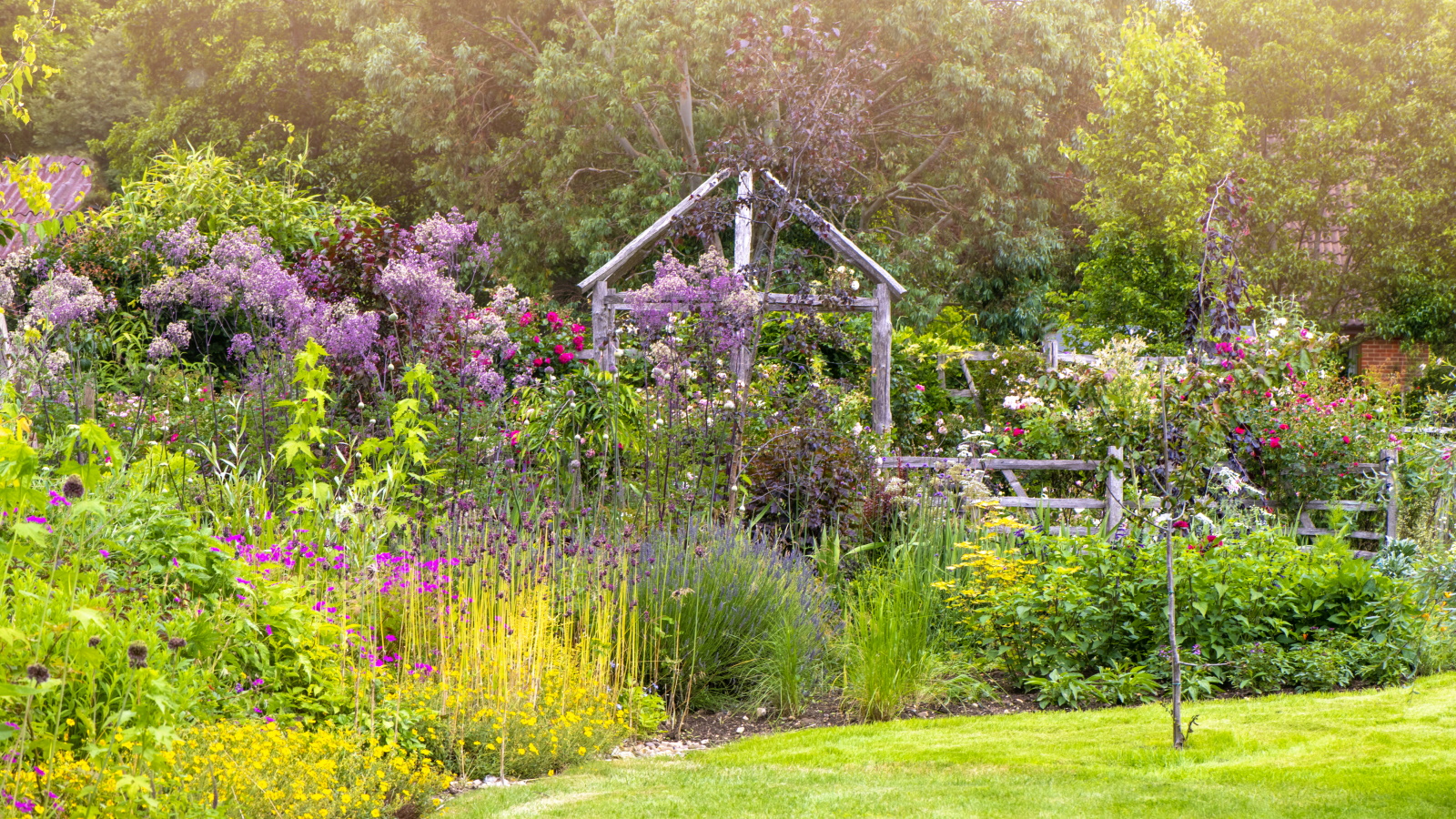

October is a time when the garden starts to slow down for the year. Ornamental displays of flowers start to fade, leaves begin to drop, and the regular lawn mowing of summer comes to an end.
However, this month is a great window to do lots of important lawn care tasks. As well as a last run out with the mower (or two depending on the climate), your grass will benefit from some fall lawn care. It can be raked, spiked and fed, while the soil is also warm enough for seed to germinate before winter.
I worked as a gardener in several historic gardens in the UK that were open to the public throughout the year. They had large lawns, formal grassed areas, and turf walkways that were subjected to a mass of footfall. It meant that lawn maintenance was a key task in fall to ensure the grass was healthy, strong enough to cope with the rigours, and also looked good for visitors each year.
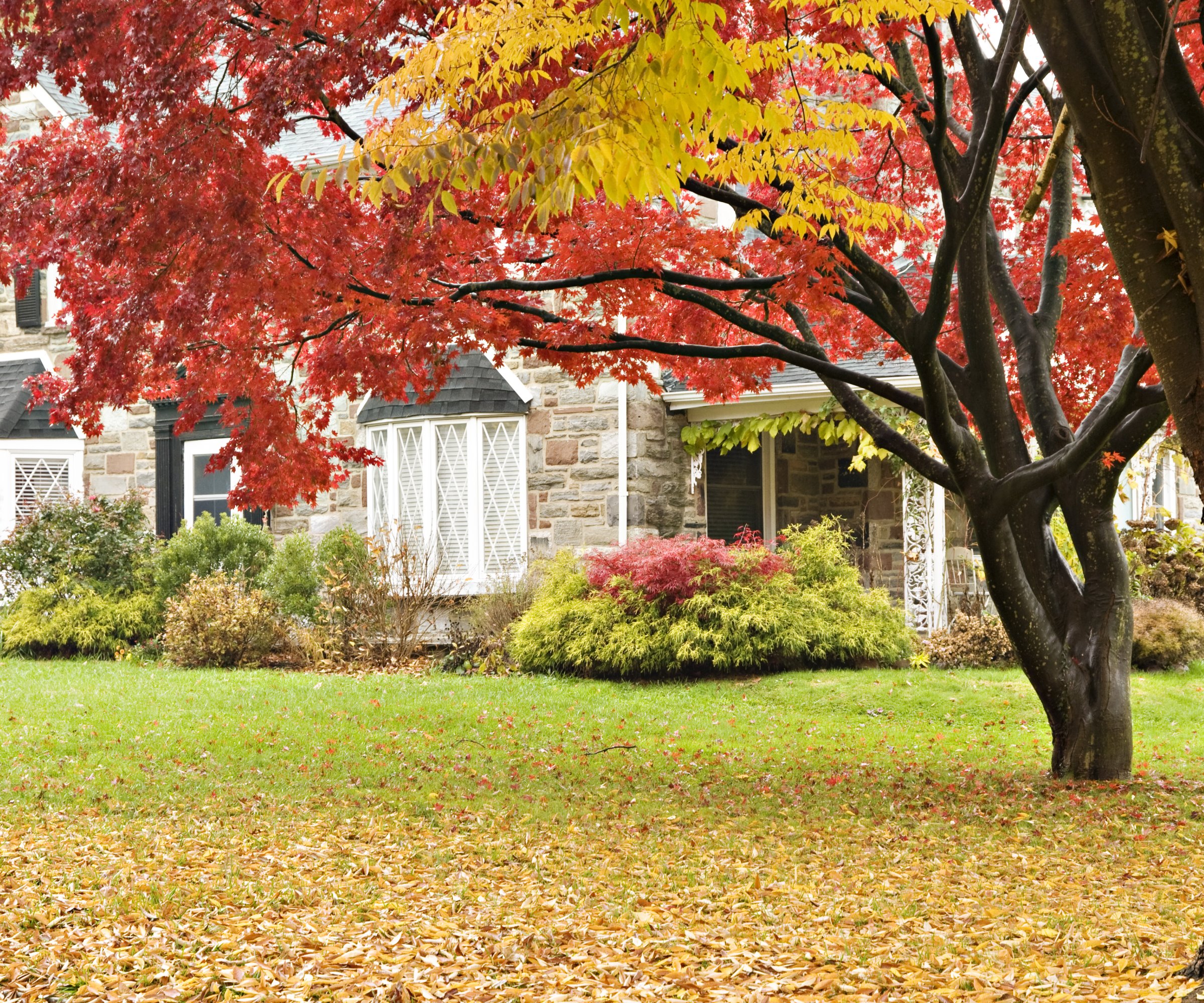
Picking up fallen leaves should be a regular task
Looking after a lawn in October
In my experience, lawn care tasks done in fall can be vital to ensuring grass is in a great condition and looks at its best come the following year. The health of the soil plays a key role in a healthy lawn and it is a lawn care mistake to neglect the soil - as the grass will suffer as a result. We take a closer look at some of the most important lawn care tasks that can be done this month to ensure your lawn is green and thick next year.
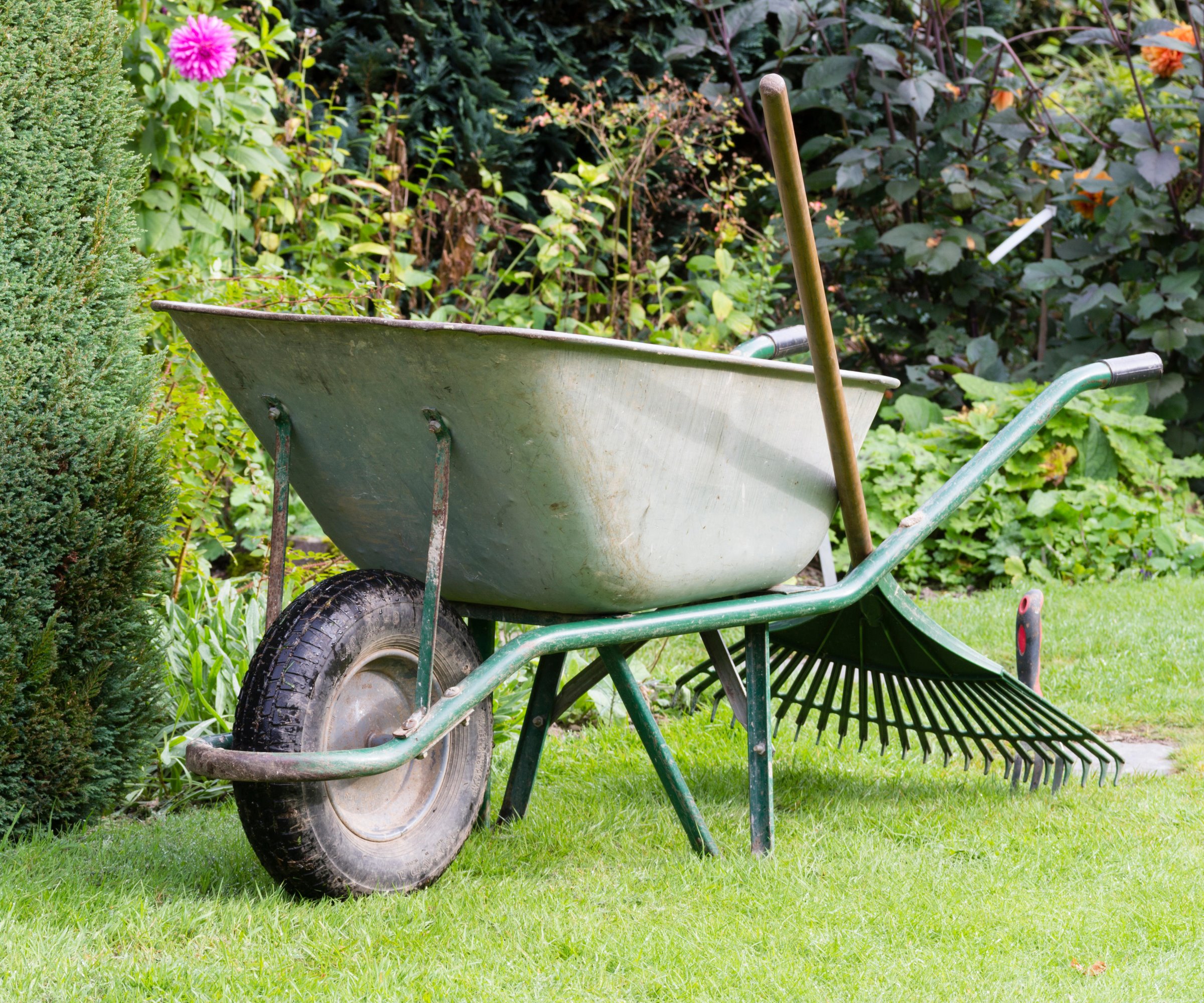
Most tasks can be done with simple garden tools
1. Mow
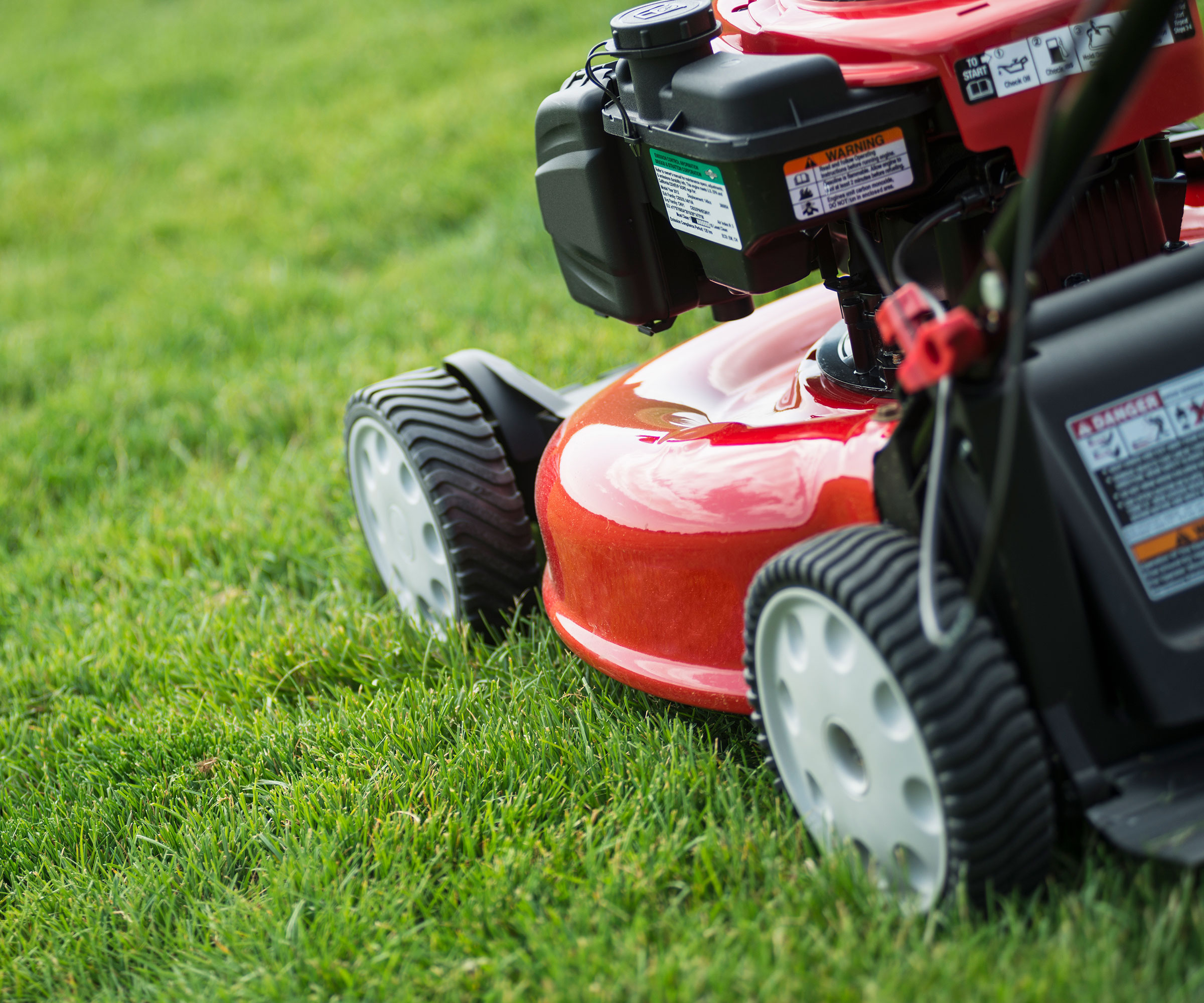
The mowing height should be increased in October
October is often the time of year when mowing the lawn starts to come to an end. It can be dependent on the weather conditions, but mid-October tends to represent the last time you mow the lawn in fall.
The grass will be growing much slower during fall than in summer, but will continue to grow when temperatures are above 40F. Change the cutting height so you are moving higher than in summer and refrain from taking the mower to cut wet grass after heavy rainfall. Do not cut frosted grass as it can damage the turf.
2. Scarify
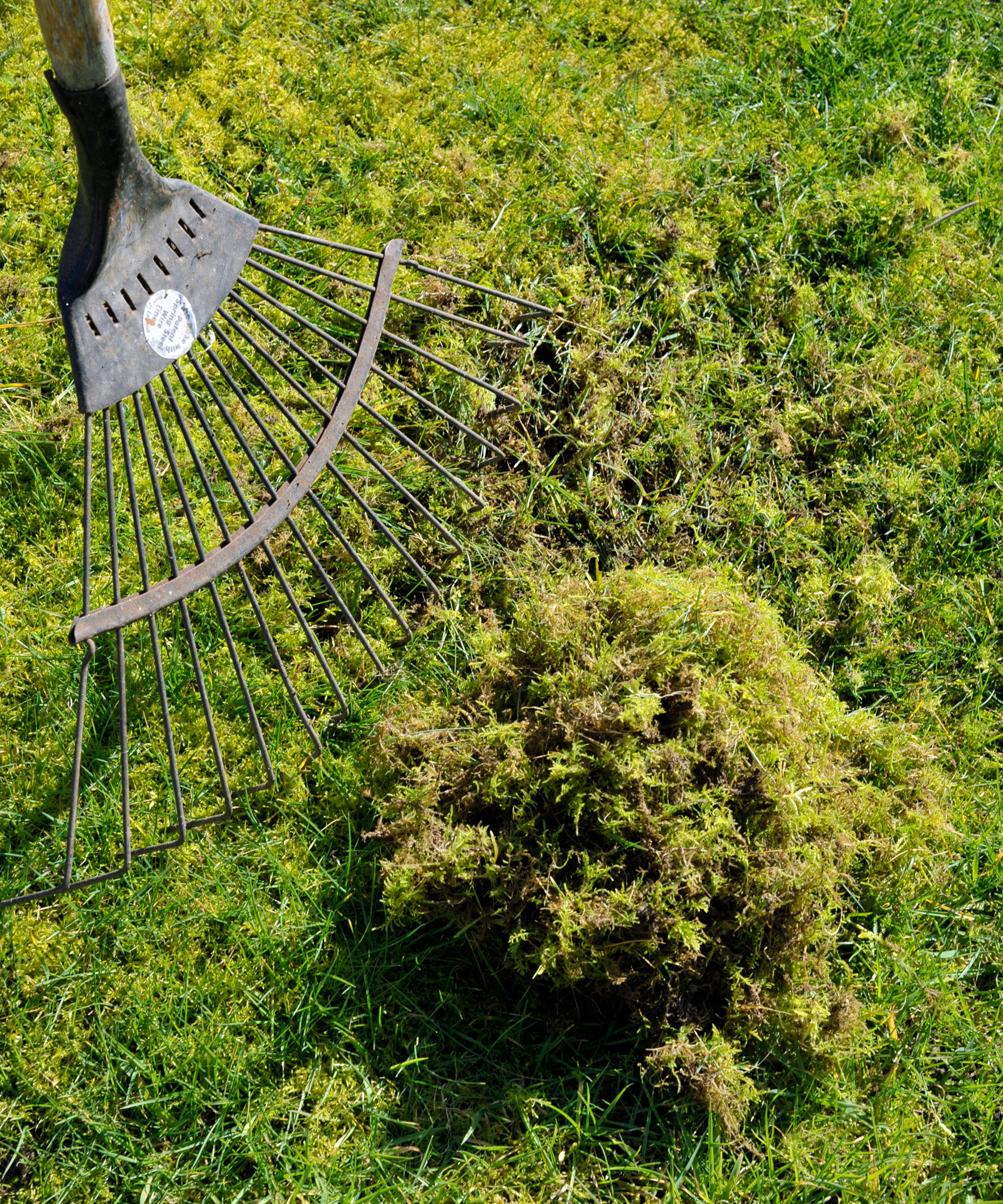
You may be surprised how much thatch comes out of the lawn
Scarifying is a fantastic way to remove moss and dead thatch from the lawn. Dead grass and other organic material will build up below the blades of the turf and can eventually affect the growth of new grass.
October is an ideal time to scarify a lawn as you can go deeper than when doing lawn maintenance in spring - when you need to be more careful to avoid damaging young grass shoots. Do not scarify after wet weather or if the lawn is frosted.
When it comes to how to scarify a lawn, you can either hire scarifying equipment or do it yourself. This can either be done simply with a spring tine rake, or you can get dethatcher and scarifier machines, such as this one at Amazon, that you can use at home. Dethatching essentially does the same job as scarifying, but removes material only from the surface while scarifying goes a bit deeper as a process.
3. Aerate
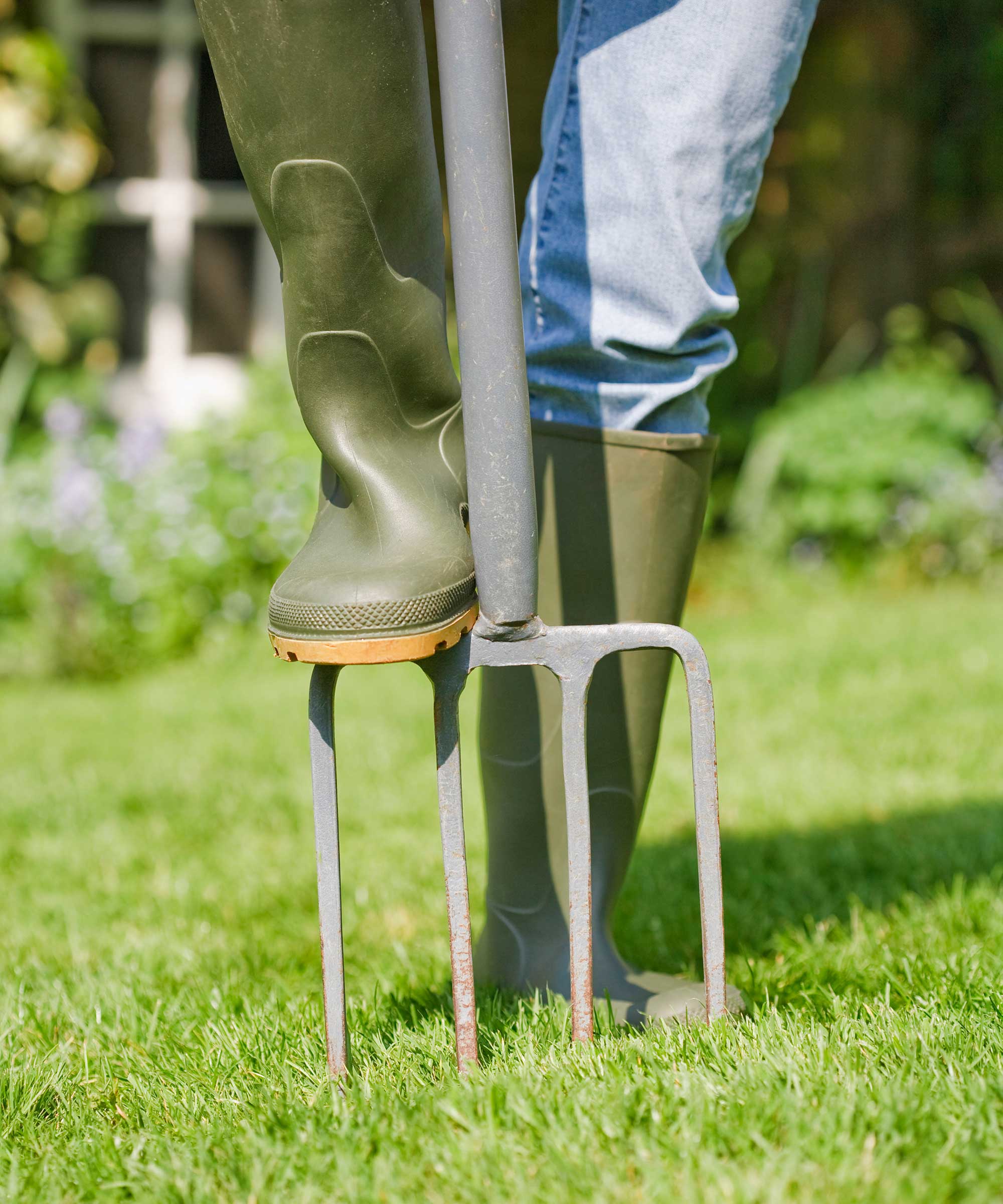
Aeration can be done with a garden fork
Aeration is the process of piercing a lawn and putting small holes down into the soil. This is a key part of any lawn maintenance regime as it benefits the roots, reduces compaction, and helps create a stronger overall lawn.
In the same way as with scarifying, if you want to aerate a lawn you can either get professional equipment in or simply use a garden fork.
October is a good time to aerate as the ground will be moist and it will be easier to penetrate the soil. However, when choosing when to aerate the lawn, take care not to do it when the ground is too damp - or you could end up leaving a muddy mess behind you.
4. Feed
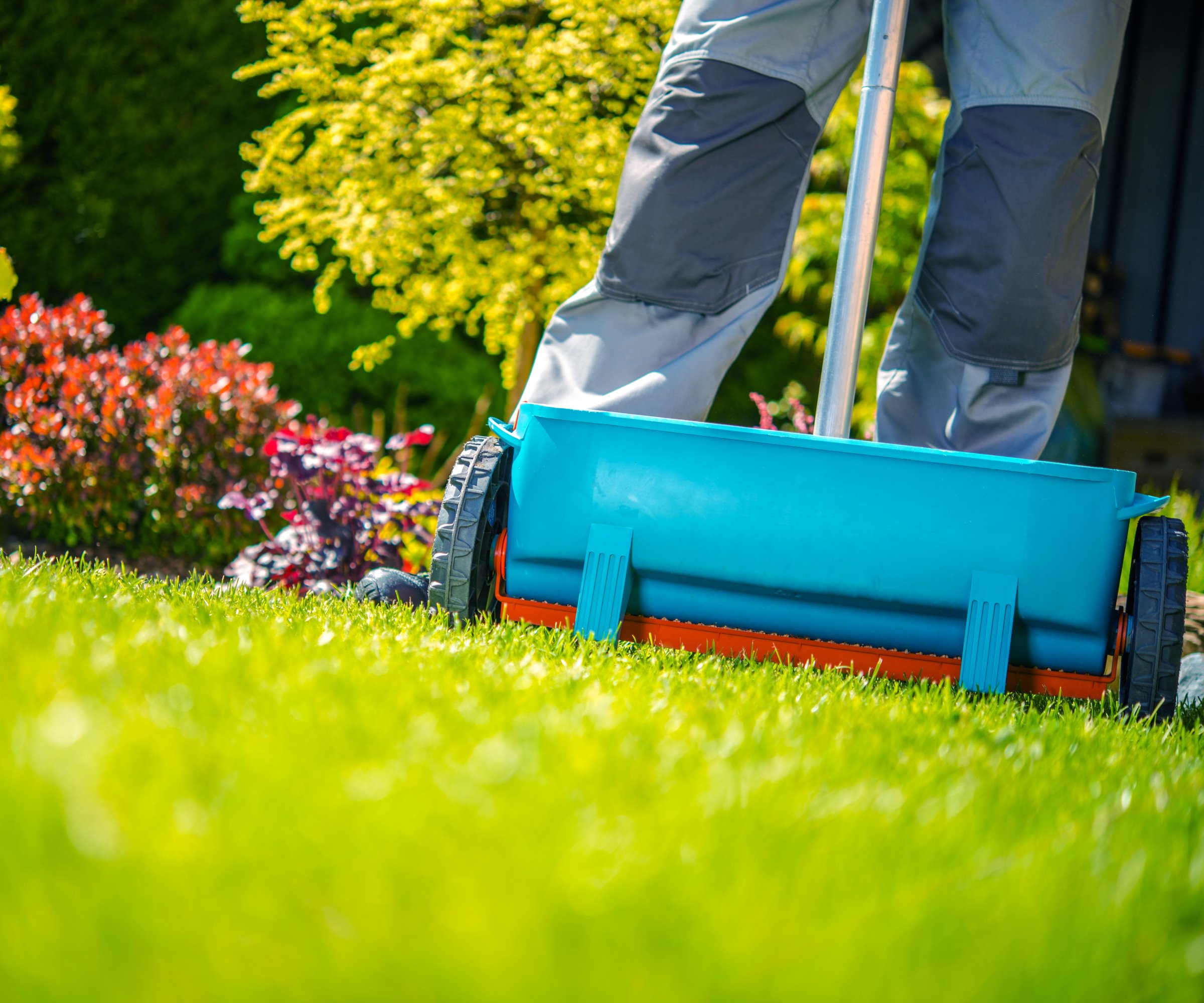
Only use feed designed specifically for use in fall
October is an ideal time to fertilize a lawn. While the soil is still warm and the grass is still growing, the addition of nutrients will help develop strong roots and also help to keep the grass protected from the cold winter months.
When feeding a lawn in fall, always ensure to use a fertilizer designed for use at this time of year. A fall lawn fertilizer will be high in phosphorus and potassium, this encourages root growth and protects the grass from frost. If you use summer fertilizer, which is high in nitrogen, this will encourage fresh growth that will be damaged by the winter weather and leave the lawn susceptible to diseases.
It is ideal to aerate a lawn before fertilizing as it allows the feed to penetrate right down to the roots. An example of a feed to use in October is the Winter Survival Fall Lawn Food, available at Walmart.
5. Overseed
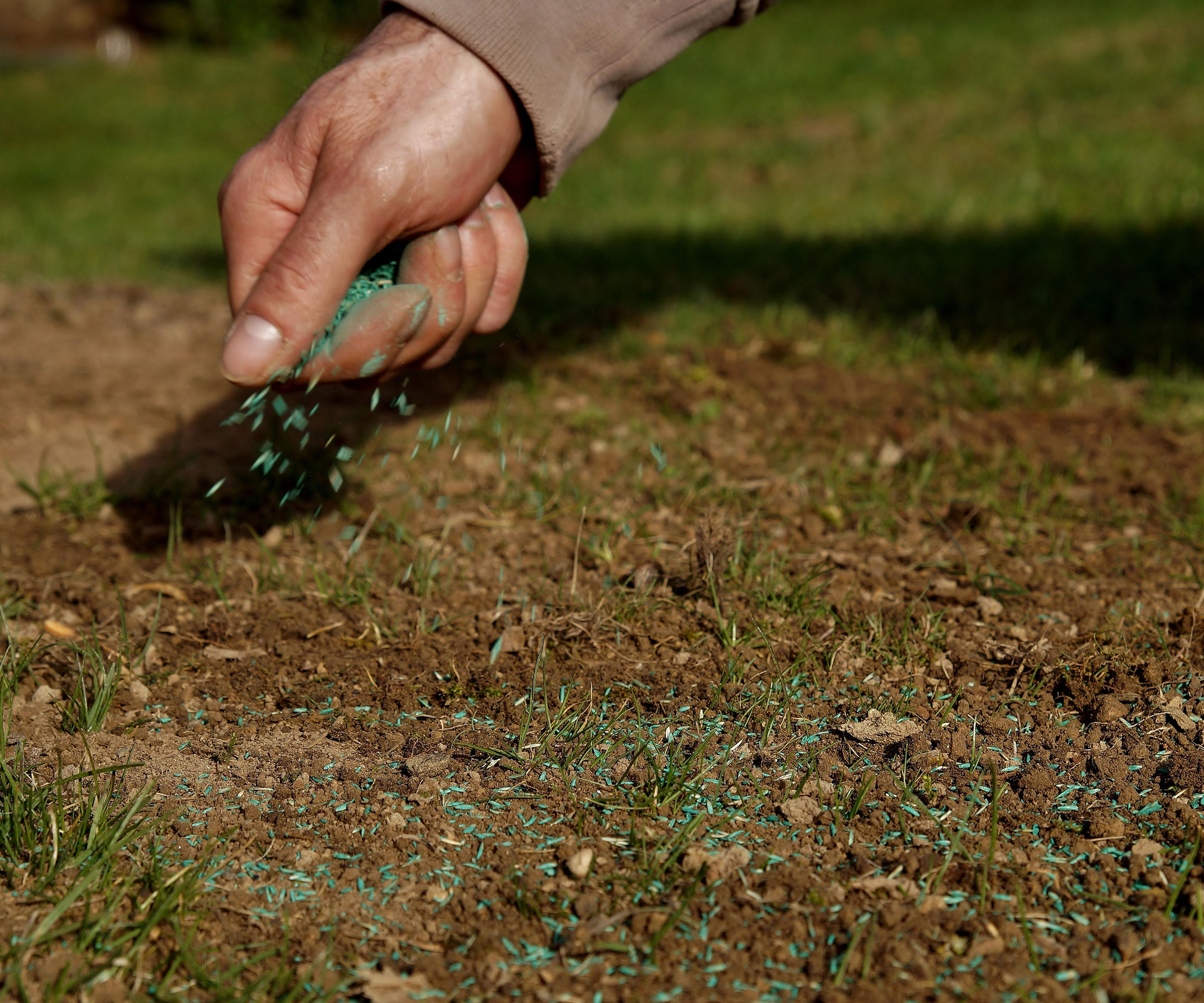
The soil will be warm and moist enough to germinate grass seed
Overseeding is a quick method to repair bare patches and October can be the last chance of the year to plant grass seed. The soil temperature will be warm enough, and the ground will likely be moist, to quickly stimulate any fast growing grass seeds into growth.
When it comes to overseeding a lawn in fall, if the soil temperature is above 48F then the seed will start to germinate and there should be sufficient time to put down roots before winter arrives. It is recommended to mow, scarify and aerate before seeding and to make sure the soil is moist for a few weeks after planting grass seed.
6. Collect leaves
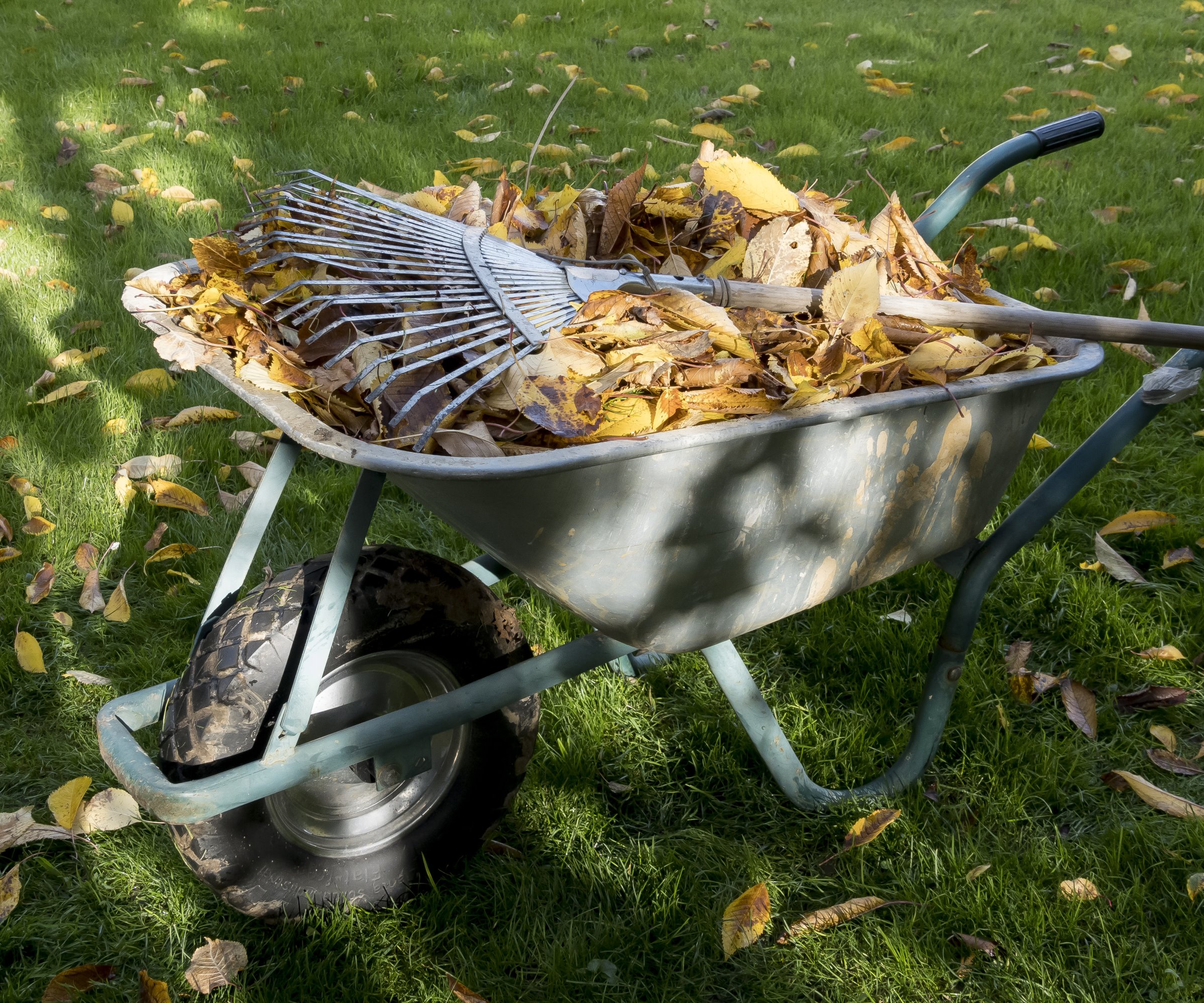
Collected leaves can be used to make leaf mould
As the trees start to lose their leaves in fall, they will drop onto lawns. An important job in October is to regularly go out and collect these leaves. Leaving them on the lawn can cause them to smother grass and block out light from getting to the ground. This can harm the overall health of the lawn and a layer of leaves can also contribute to mounting moss problems.
While it may seem a toiling task to collect leaves, there are big benefits. You can make leaf mold, which can be used around the garden in the future to add nutrients to the soil. A battery-powered leaf blower, such as the SnapFresh Leaf Blower available at Amazon, can make collecting leaves much easier.
7. Shut down sprinklers
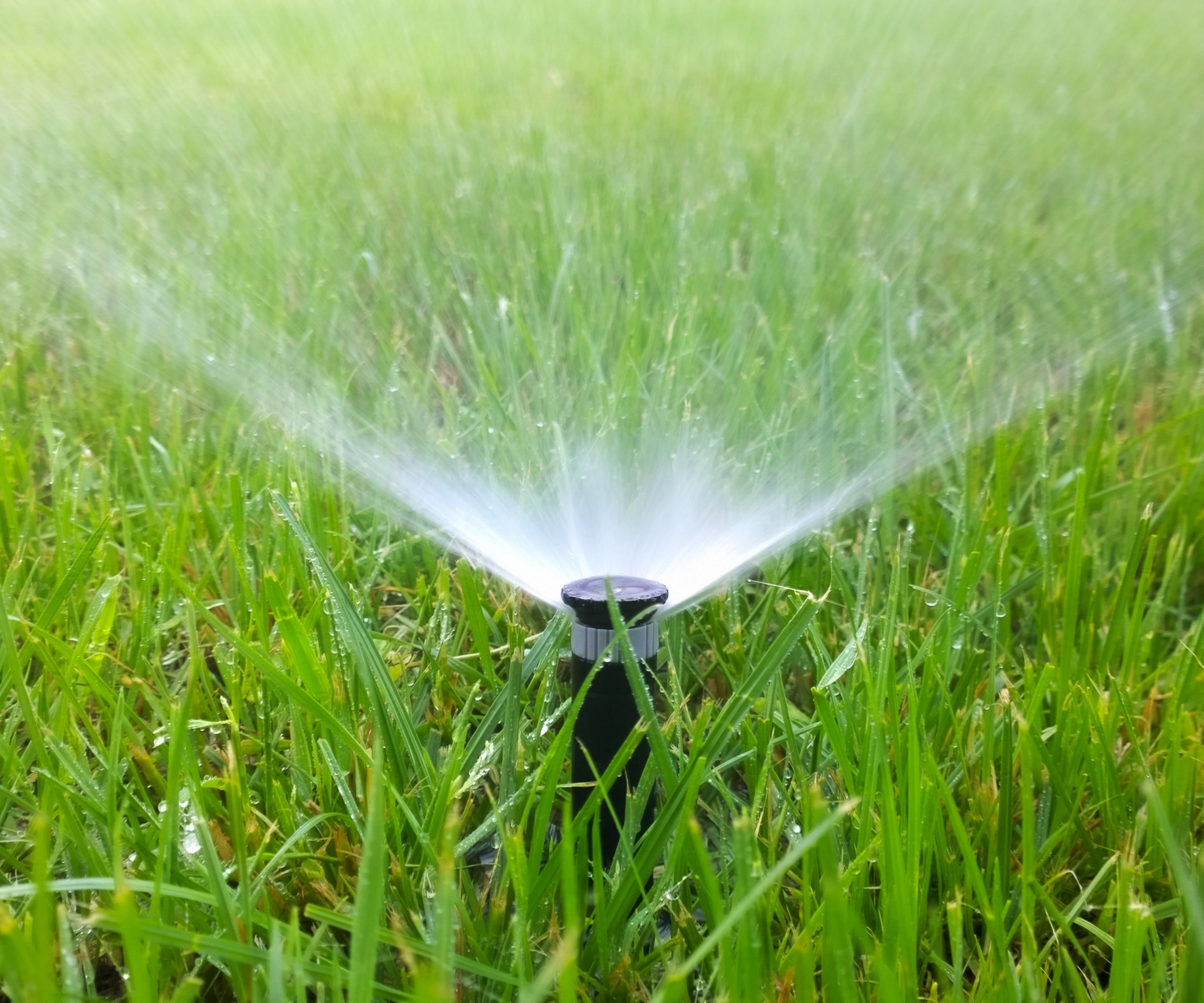
Sprinkler heads can burst if water inside them freezes and expands
If you have a sprinkler system to water a lawn during the summer months, then it is important to decommission the system in fall. You may want to winterize a sprinkler system, a process that includes blowing out a sprinkler system, before the first frosts arrive.
A failure to switch off the system could cause huge damage to the lawn as pipes and components can be damaged by water that freezes in the system. This can lead to ruined lawns and grass needing to be ripped up to repair pipes. After spending a lot of time on vital lawn care to make it look at its best, it would be a blow to have to repair any damage caused by a failure to switch sprinkler systems off for winter.
FAQs
Should I put down grass seed or turf in October?
The good news is that you can do either in October. The soil is warm enough for grass seed to germinate within 7-10 days, while turf can also be laid in October. It is possible to put down turf well into fall, as long as the ground is not frozen. With the ground moist and the temperatures lower, fall is one of the best times of the year to lay turf.
Many common lawn problems can be proactively addressed by having a lawn maintenance regime for spring and fall. While it can be satisfying to mow stripes into a lawn in summer, you do need the soil and grass to be healthy year-round in order to get the best effect.
Sign up to the Homes & Gardens newsletter
Design expertise in your inbox – from inspiring decorating ideas and beautiful celebrity homes to practical gardening advice and shopping round-ups.

Drew’s passion for gardening started with growing vegetables and salad in raised beds in a small urban terrace garden. He has worked as a professional gardener in historic gardens and specialises in growing vegetables, fruit, herbs, and cut flowers as a kitchen gardener. That passion for growing extends to being an allotmenteer, garden blogger, and producing how-to gardening guides for websites. Drew was shortlisted for the New Talent of the Year award at the 2023 Garden Media Guild Awards.
-
 These are the 6 must-have colors to decorate with in April 2025
These are the 6 must-have colors to decorate with in April 2025What do retro-inspired yellows and beautiful blues all have in common? They're on our hot list for the season ahead
By Sophia Pouget de St Victor Published
-
 Plants never to grow next to fruit trees
Plants never to grow next to fruit treesExpert advice on which plants to keep away from fruit trees to encourage a healthy harvest
By Jacky Parker Published